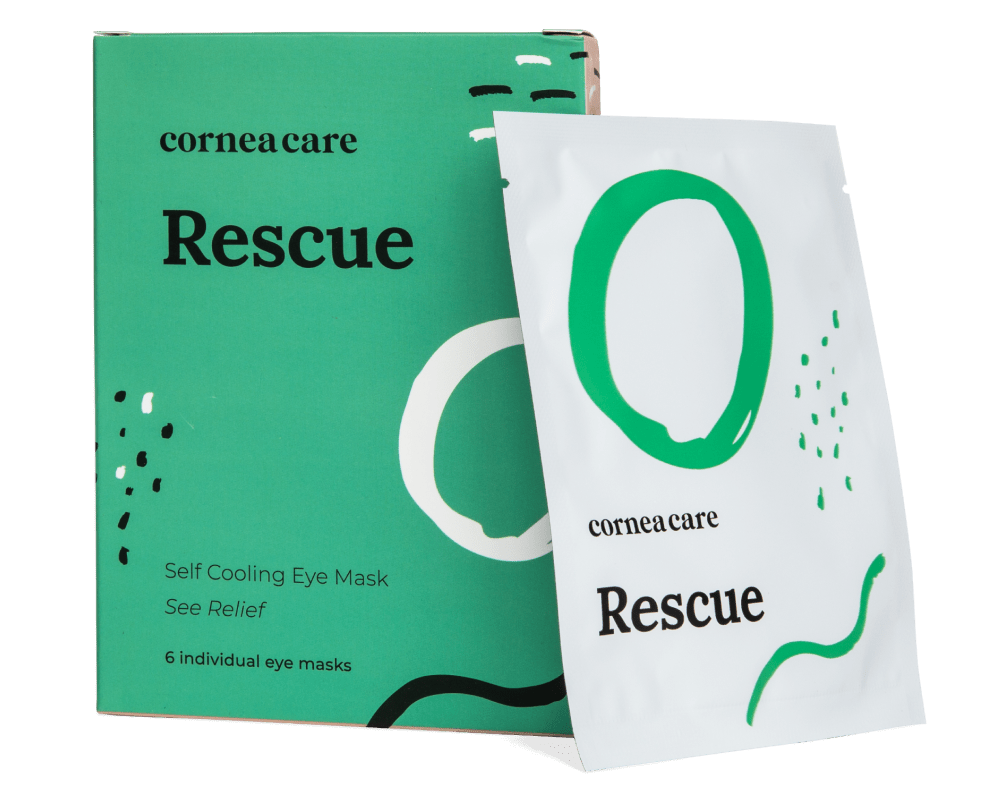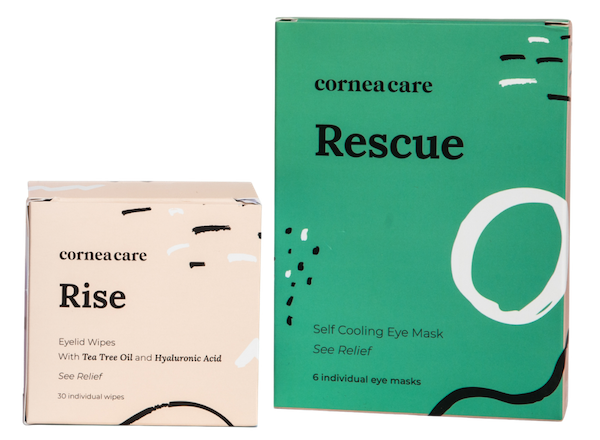So can you really get pink eye from a fart?
Pink eye, or conjunctivitis, is a common and often uncomfortable condition characterized by inflammation of the conjunctiva, the thin membrane covering the white part of the eye. While it’s typically caused by bacteria, viruses, allergens, or irritants, there’s a long-standing urban legend that suggests a rather unconventional culprit: flatulence.
Yes, you read that right. Farting — the natural, albeit sometimes embarrassing, bodily function — has been implicated in the spread of pink eye. But is there any truth to this claim, or is it merely a humorous myth passed down through generations?
Let’s take a closer look at the science behind this eyebrow-raising notion to determine whether there’s any merit to the idea that passing gas could lead to a case of conjunctivitis and uncover the answer to the burning question: Can you get pink eye from a fart?
Key Points
- Pink eye, also called conjunctivitis, refers to any inflammatory condition of the membrane that lines the eye.
- The most common types of conjunctivitis are viral, bacterial and allergic.
- The treatment for pink eye depends on the cause but may include topical eye drops, warm or cold compresses, artificial tears, and good hygiene.
What is Pink Eye?
Pink eye is redness of the sclera, the white part of the eye.1 Conjunctivitis refers to an inflammatory condition of the membrane that lines the eyelids and covers the exposed surface of the sclera. A pink eye diagnosis is nonspecific. A doctor trained in ophthalmology or optometry can diagnose the type of pink eye based on patient history, symptoms, and an examination of the eye. Patients with a new pink or red eye should seek eyecare immediately.
According to the Cleveland Clinic, there are an estimated 6 million cases of pink eye each year.2
What are Common Causes of Pink Eye?
The three most common causes of pink eye are allergens, viruses or bacteria.
Allergic Conjunctivitis
Allergic conjunctivitis is a common immunological hypersensitivity disorder that affects up to 40% of the population, often called an allergic reaction. Rhinitis (a “runny nose”) frequently presents with allergic conjunctivitis. The number of patients with allergic conjunctivitis has substantially increased and initial presentation includes itching and swelling of the eyes that impact one’s quality of life. Only 10% of patients see a doctor for ocular allergies because they manage symptoms themselves with over-the-counter therapies.
Often, a general practitioner under-treats or misdiagnoses ocular allergies. Itching and blurry vision are the most common symptoms of ocular allergy and they often occur simultaneously with nasal symptoms.3
Papillae are visible around the superior limbus of the conjunctiva of the eye in new, acute cases and may lead to cobblestoning and limbal lesions known as Horner-Trantas (Trantas’) dots containing eosinophils. In contrast, trantas’ dots are signs of chronic ocular allergies like vernal keratoconjunctivitis and atopic keratoconjunctivitis. Stringy mucus threads are a common feature of chronic forms of conjunctivitis.2
Allergic conjunctivitis can be seasonal or perennial based on the presence of the allergen. Perennial allergens are often dust mites or animal dander.
Viral Conjunctivitis
Viral conjunctivitis is the most common infectious cause of pink eye. The symptoms may vary and are likely to resolve on their own without treatment.3 The most common symptoms are watery mucus discharge and bumps on the underside of the lid called follicles. Patients with viral conjunctivitis often have a history of recent illness.
- Common Cold
The common cold can cause viral conjunctivitis. Consequently, the patient may have systemic symptoms including runny nose, sore throat or cough. - Coronavirus
Patients with a SARS-CoV2 infection can present with viral conjunctivitis because coronaviruses present in tears according to the CDC. Many investigations conclude the infection of SARS-CoV and HCoV-NL63 into human cells is mediated by more receptors than ACE2, although the exact mechanism remains unknown. SARS-CoV-2 viruses find the ACE2 receptor on corneal epithelium cells via the help of HSPG receptors in the eye’s extracellular matrix.4 - Herpes
Herpes simplex virus type 1 is the cause of the herpes simplex ocular virus and cold sores. Typically, herpes simplex affects one eye upon virus reactivation. HSV can cause scarring of the cornea leading to vision loss if not treated.5
Bacterial Conjunctivitis
Bacterial conjunctivitis is the second most common cause of infectious conjunctivitis but most cases resolve in 1 to 2 weeks. Eyelash mattering and sticky eyelids on waking without itching are typical symptoms.3 However, the discharge tends to be more green/yellow color when compared to the watery discharge present with viral conjunctivitis.
Finally, gonorrhea, a type of sexually transmitted disease, is estimated to affect 86.9 million adults.6 The ocular discharge is very mucopurulent which means it tends to be thick and cloudy.
Dry Eye
Dry eye has similar symptoms and is often misdiagnosed as pink eye. Its prevalence around the world varies from 5% to 34%.7 A trained eye care provider performs a slit lamp exam to differentiate dry eye from conjunctivitis.
Our Community
Chat, share, and learn from our doctors, coaches and others like yourself
👩⚕️ Get answers!

Symptoms of Pink Eye
Symptoms vary by the type of pink eye but may include:
- Blurry vision
- Mattering
- Watery eyes
- Pink or red color of the white part of the eye (sclera)
- Swelling of the conjunctiva, which lines the sclera
- Irritation or burning
Can You Get Pink Eye from a Fart?
As you have learned, pink eye is the result of a virus, bacteria or an allergic reaction. While, flatulence, commonly called “farting” is passing gas from the digestive system from the body. Flatulence is a normal biological process when food is digested resulting in a buildup of gas. Furthermore, methane is a byproduct of the digestion process expelled from the body by flatulence or exhaling.
Flatulence usually only has a bad smell if it contains sulfur gas. Expelled gas is not able to cause pink eye and you cannot get pink eye from a fart.8
Viruses and bacteria can be very contagious and can spread from person to person in different ways. Specifically, germs are spread through close contact like touching or shaking hands, through air by coughing and sneezing, or by touching an object or surface with germs on it and then touching your eyes prior to washing your hands.9
Conjunctivitis Treatment
The treatment for conjunctivitis depends on the cause. Generally, doctors recommend you wash your pillowcases, practice good hygiene like hand washing, and discontinue your contact lenses during treatment.
Allergic Conjunctivitis
Allergic conjunctivitis treatment typically begins with avoiding the allergen, cool compresses and artificial tears. Topical antihistamines eye drops like Pataday or Lastacaft treat chronic symptoms. Still, some providers will recommend additional therapies like decongestants, mast cell stabilizers, or nonsteroidal anti-inflammatory drugs (NSAIDS). For more advanced cases, topical steroids offer short-term treatment.2
Additionally, a physician may order an allergy tests to provide evidence of an allergic basis for the patient’s symptoms.2

Rescue
Cold Compresses
Perfect for sudden flare-ups of eye dryness, pain, burning, and swollen/inflamed eyelids. Free shipping 📦.
Try today - $12
Bacterial Conjunctivitis
Treating bacterial conjunctivitis with a topical antibiotic will reduce symptoms and allow an earlier return to school or work. In cases of suspected conjunctivitis secondary to sexually transmitted diseases such as chlamydia and gonorrhea, systemic treatment in required in addition to topical antibiotic therapy.3
Viral Conjunctivitis
Artificial tears will soothe an eye with a viral infection. A cool washcloth or a CorneaCare Self-Cooling Cold Compress can improve the look and feel of the eyes by constricting the blood vessels. Eyelid wipes remove any debris and mucus on the eyelashes.

Starter
Eyelid Hygiene Plan 1
Perfect for eye dryness, burning, itching, pain, crusting/flaking of eyelashes and inflamed eyelids. Free shipping 📦.
Try today - $35
Can You Get Pink Eye from a Fart FAQ
Viral infections, particularly those caused by adenoviruses, are the primary culprits behind the majority of cases of pink eye. These viruses are highly contagious and easily spread through direct contact with infected individuals or surfaces contaminated with the virus. While viral conjunctivitis is the most common form, bacterial and allergic conjunctivitis can also contribute to cases of pink eye, albeit less frequently.
Pink eye can result from exposure to bacteria or viruses present in fecal matter. The most common bacterial culprits are strains of Staphylococcus aureus and Streptococcus pneumoniae, while viruses such as adenoviruses are also known to cause infections. Poor hygiene practices, such as not washing hands properly after using the bathroom, can facilitate the transfer of these pathogens to the eyes, leading to pink eye.
Pink eye can develop suddenly and seemingly overnight due to the rapid spread of infectious agents. For instance, if you unknowingly come into contact with someone who has pink eye or with surfaces contaminated by their eye secretions, you may inadvertently transfer the virus or bacteria to your own eyes. Additionally, certain environmental factors or allergens can trigger pink eye symptoms, leading to a seemingly abrupt onset of the condition.
Putting It All Together
It’s clear that while the idea of contracting pink eye from a fart may elicit laughter or incredulity, it lacks substantial scientific support. While flatulence does contain bacteria and other microorganisms, the likelihood of these pathogens causing conjunctivitis through direct contact with the eyes is incredibly low.
Instead, the spread of pink eye is far more commonly associated with direct contact with infected respiratory secretions, contaminated objects, or surfaces. Practicing good hygiene, such as regularly washing hands and avoiding touching the face, remains the most effective way to prevent the transmission of pink eye.
What’s Next
Learn the truth about pink eye! Check out these articles next:



